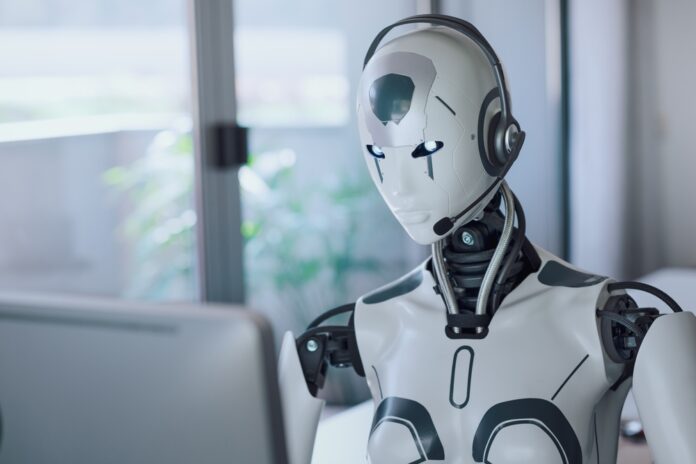The integration between Robotic Process Automation (RPA) and Artificial Intelligence (AI) is radically changing the boundaries of corporate automation. While robots were previously limited to simple and repetitive tasks, they now gain cognitive abilities to interpret unstructured documents, make intelligent decisions, and handle complex exceptions in critical processes, such as BPM processes. The result is a leap in efficiency and innovation, expanding the horizons of digital transformation.
In the last decade, traditional RPA dominated automation projects by automating repetitive and rule-based tasks, executing structured procedures tirelessly and without errors. However, RPA alone has limitations—the technology depends on well-defined inputs and does ‘not understand’ semi-structured or contextual information.
The arrival of AI changed this landscape. Cognitive RPA (or Intelligent Process Automation, IPA) is the logical evolution of RPA: by integrating AI and machine learning algorithms, robots become smarter, more adaptable, and capable of learning. Instead of just following fixed rules, they begin to interpret data, identify patterns, and make basic decisions.
This enables more dynamic automation in constantly changing scenarios. However, it is important to note that AI alone does not resolve exceptions, as misinterpretations can occur. For these cases, it is essential to integrate structured rules and tools like BPM (Business Process Management), which directs activities for human intervention in an organized manner, ensuring total process management, even in the face of AI failures or inconsistencies.
Unstructured data: from challenge to opportunity
Around 80% of corporate data is unstructured—this includes free-form text, images, PDF documents, voice recordings, emails, and more.
This content has always been a challenge: traditional computers do not interpret it easily. The combination of RPA and AI has been solving this puzzle. Through Natural Language Processing (NLP) techniques, bots now understand and extract information from texts and emails; with computer vision and OCR algorithms, they can ‘read’ scanned documents, PDFs, and even images, converting them into usable data.
Additionally, predictive and learning models allow automated systems to make data-driven decisions—for example, classifying the subject of an email and forwarding it to the correct destination, or approving transactions based on intelligent rules.
The practical impact is enormous. Previously manual and time-consuming processes can now be automated end-to-end. A common example is extracting information from forms and invoices: Intelligent Document Processing tools use AI to read fields in PDFs or images, and RPA inputs this data into internal systems without human intervention. Similarly, emails can be read by AI, which identifies intent, language, or sentiment, and can trigger automated actions via RPA. This synergy eliminates rework, reduces errors, and accelerates operational cycles. Indeed, by combining RPA and AI, companies report reductions of up to 85% in processing time for certain processes, quadrupling operational capacity without increasing teams. Unstructured data is no longer forbidden territory for automation—today, it is seen as a treasure to be explored, with the right tools.
Trends in technology
The convergence of RPA with AI is part of a broader trend, often called hyperautomation. This approach, highlighted by Gartner among the top technology trends in recent years, seeks to automate everything possible within an organization.
To achieve this, RPA, AI/ML, process mining, intelligent workflow platforms, and various other tools are combined into an integrated automation pipeline. Hyperautomation aims to quickly identify and automate end-to-end processes, going beyond the automation of isolated tasks.
Thus, pioneering companies are already investing in complete automation ecosystems, where an intelligent mechanism extracts insights from documents or big data and triggers robots to execute subsequent actions in an orchestrated manner. According to industry estimates, this movement has generated significant results in cost reduction and productivity gains.
Another trend is the incorporation of Generative AI into automation platforms. Technologies like advanced language models enable robots to handle even more sophisticated activities—generating text, summarizing long documents, extracting context from conversations, and even writing code to automate new tasks.
This symbiosis between RPA and generative AI points to a future where much of corporate workflow can be self-managed by intelligent systems, with minimal human interference in operational activities. From a market and investment perspective, indicators reflect the scale of this convergence. Global estimates project that the cognitive automation market will reach $53 billion by 2032. Meanwhile, the specific RPA market, once limited to fixed-rule-based flows, is transforming and is expected to reach $15 billion around 2029, largely driven by the incorporation of intelligence into robots.
Strategy, challenges, and next steps
The union of these technologies brings opportunities but also requires a clear strategic vision. One of the biggest challenges is ensuring data quality to train intelligent models.
Since these models depend directly on the quality of the information used in training, any inconsistency or incorrect data can drastically compromise automation results. Companies need to invest not only in advanced technologies but also in rigorous data management and validation strategies, ensuring accuracy, consistency, and constant updates.
Another challenge involves aligning new automated solutions with existing technological architecture, which is often heterogeneous and composed of legacy systems that are difficult to integrate. This scenario adds complexity, requiring technical teams to plan meticulously to avoid incompatibilities or operational failures.
Additionally, adequately measuring the return on investment (ROI) of these cognitive initiatives is also complex, as benefits often go beyond simple resource savings, impacting strategic areas such as customer satisfaction, operational efficiency, and companies’ own innovation capacity.
For leaders, the time is now: evaluate processes, invest in pilot projects, learn from the results, and scale intelligent automation responsibly. The revolution of cognitive automation is already underway, expanding the boundaries of what is possible—and those who lead the way will certainly reap the benefits of this new technological reality.


